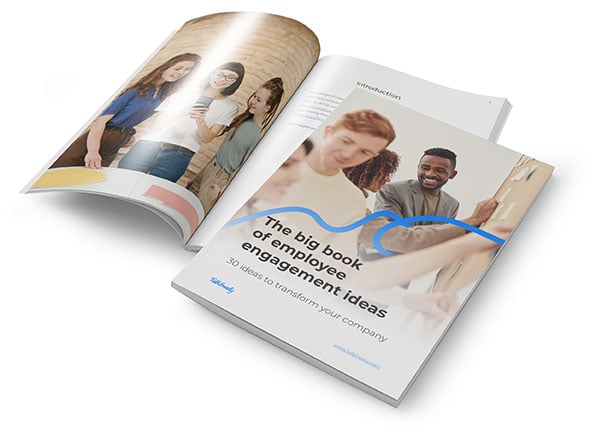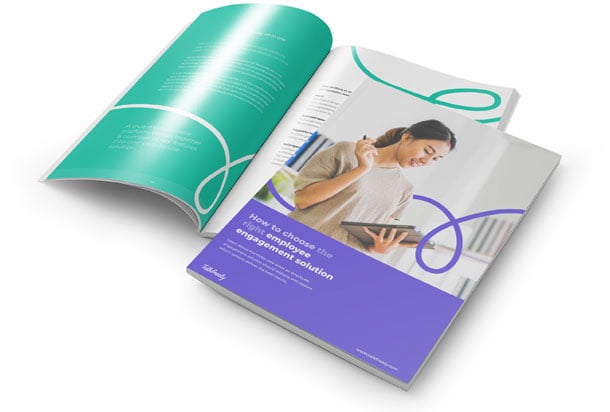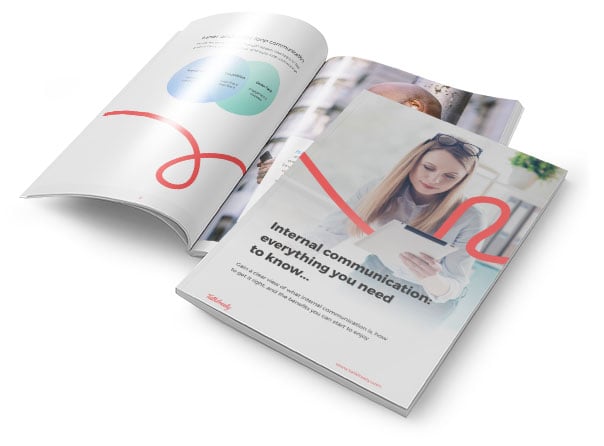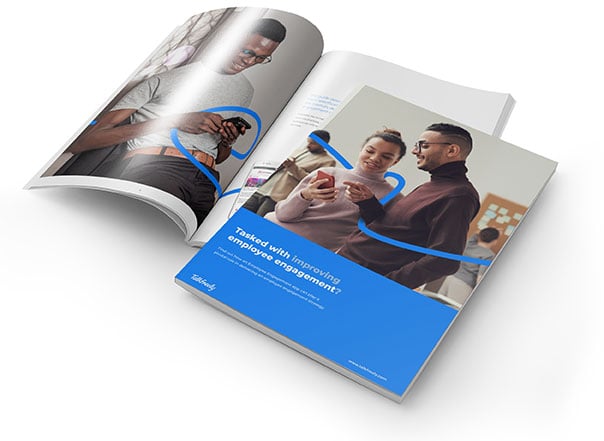Tapping into the potential of your internal teams has long had wide-reaching benefits. While an employee’s main priority is their job role, their ability to promote your business to external networks, both online and offline, can have a lasting positive impact on brand awareness.
However, marketing is often littered with buzzwords. It can be hard to differentiate whether employee advocacy is a fad which promises employee-run channels that generate organic leads, or a time-intensive program that’s fruitless in the long run.
With this in mind, what is the definition of employee advocacy; how does it benefit employee engagement and vital considerations that are key to its success?
What is Employee Advocacy?
Employee advocacy is the promotion of your business by your employees. This can be through a formal agreement, such as an internal employee advocacy program, or through genuine desire to share information about your brand.
Employee advocacy will be most visible and measurable through social media sharing, however, word-of-mouth, business networking, and events can be equally powerful to reach desired advocacy outcomes. For example, your teams might share company content on LinkedIn or Twitter, or organically advocate for your brand at industry events.
The Structure of an Employee Advocacy Program
Employee advocacy might differ or be absent depending on business culture, especially if there’s no set definition of employee engagement. What different forms can it take?
Formality
Informal: When staff engagement is higher, employee advocacy can emerge without any formal intervention from management. This is more likely to occur when teams have access to internal communication tools. They’ll feel more connected, and have greater visibility of company news or content.
Research shows that engaged employees are more likely to be enthusiastic advocates for organisational values and goals, leading to greater organic employee support.
Formal: A formal employee advocacy program that’s supported by the board will have strategic and measurable targets, making it easier to manage and engage your workforce. There may be a schedule, rota, or an underlying strategy to user sharing.
In a study of social media-based employee advocacy, nearly 64% of advocates in a formal program credited employee advocacy with attracting and developing new business, and nearly 45% attributed it to new revenue streams – highlighting the benefits of a formal strategy.
Values and Outcomes
Organic Growth: A common aim of an employee advocacy program is growing brand awareness organically. If teams are aligned with the goals of your advocacy strategy, they’ll be more likely to engage and promote their employer. Considering that typical employee sharing has double the click-through rate than content shared directly by their company, engagement is a strategic requirement for organic worker participation.
Attracting New Talent: Today's competitive job market is matched by equally hard-to-reach, skilled, and talented new hires. When internal employees share positive experiences, personal developments, and workplace culture highlights, you’re more likely to attract top talent. Moreover, encouraging employees to share experiences creates a culture of innovation and overcomes the all-too-common cultural iceberg.
New Business: Demonstrating your organisation’s strengths by sharing case studies, customer testimonials, knowledge, and insights can help attract new prospects. And, when this information comes directly from your employees it not only reaches a larger network, but also boosts authenticity and trust of your brand storytelling.
Employee Advocacy Examples
To empower your employees to engage with an employee advocacy program, you’ll need a powerful internal communications management tool that teams can use to find, discuss, and share company information. This can range from business updates, news, events, case studies, or surveys – all of which can be powerful engagement initiators.
Employees that have a platform to discuss all-things internal culture will generate organic discussion. They are more likely to invest time in genuine employee advocacy, through social media channels or real-life interactions.
Here are some methods that engage employees:
- Social Media Material
Providing material to share on social media will reduce labour and time for employees, making social sharing easier. Consider sending need-to-know information, product knowledge, or company news directly to users with push notifications or on an internal portal, so information becomes easy to find – easy to share.
- Recognition
Spotlighting your employees will turn them into your best brand ambassadors. Businesses can establish a recognition scheme, highlight accomplishments in meetings, or encourage peer-to-peer recognition across all tiers of the company. Not only does recognition positively impact productivity, happier staff are more likely to engage with an employee advocacy scheme.
- Participation
For the busy employee whose calendar is always full, participating in brand advocacy – whether on social media or in real-life – can be a daunting prospect. Your organisation should make it straightforward for employees to participate and reward efforts.
It’s important to acknowledge that not every user wants to fulfil the brand ambassador ‘shoes’, but it’s still useful to provide opportunities for participation. Consider the different methods of reaching employees, and use one that’s suitable for your teams.
- Branded Goods
A novel method of encouraging employee advocacy is with branded items, such as your company logo, on notebooks, stickers, and even t-shirts. This can enhance a sense of community and belonging for employees, contributing positively to engagement and strengthening your workplace culture.
Employee Advocacy is No Myth, but Relies on Engagement
Employee advocacy is a worthwhile and powerful way of generating greater brand awareness. However, it should be inspired, not demanded or expected without nurturing. Beginning a formal employee advocacy program, devising a strategy, and asking employees to participate must go hand-in-hand with genuine employee engagement. Discover how to boost staff involvement with our free guide, and create a company culture that's prepared for greater employee advocacy.
Topics:
Employee Engagement







